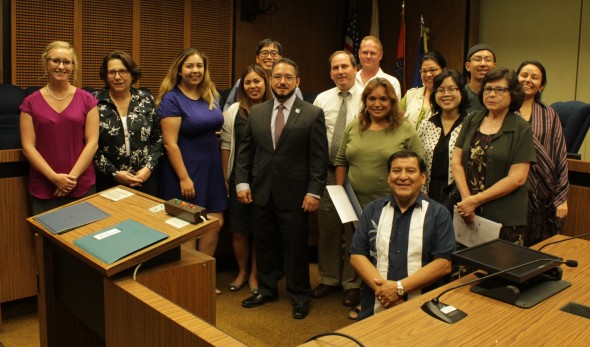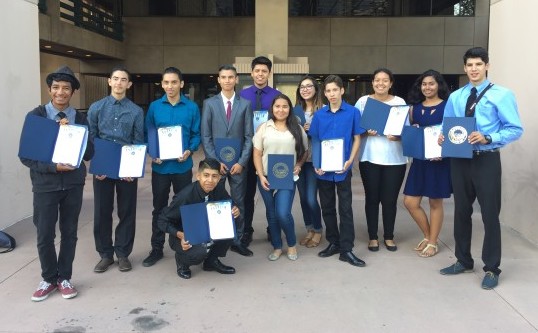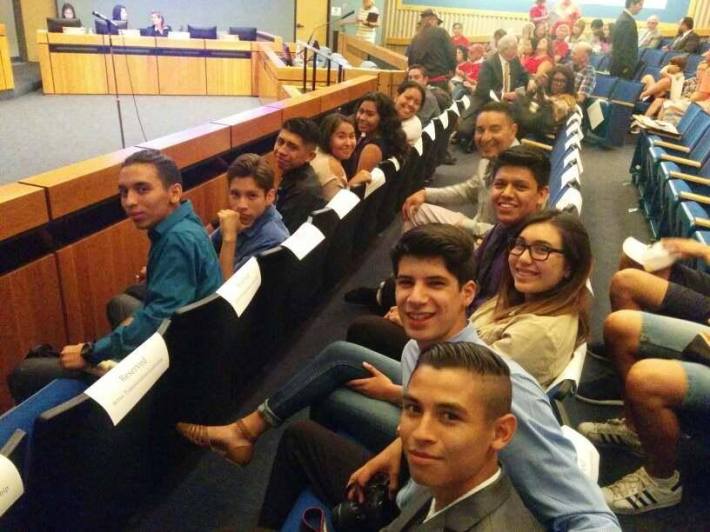
As 16-year-old Alexandra Retana walked up to the podium during last week's Anaheim City Council meeting's public comment period, she took a breath to calm herself.
It was her first time speaking to council. Dressed formally and perfectly groomed, she still felt nervous as she readied herself to speak.
"It was scary because they are so high up there, and we never speak to people like that," said Retana, a junior at Anaheim High School.
Retana, along with other students from Anaheim High School, came to the August 9 council meeting to speak as part of the culmination of the Active Transportation Leadership Program, a crash course for residents who want to help reshape their streets for biking and walking. The students—for many it was their first time speaking to the council—spoke about the need for better safety and accessibility for pedestrians and bicyclists in their communities.
Retana raised the issue of pedestrian safety on her route to school along Sycamore and Citron streets. The area favors cars more than pedestrians, she said, and people need more high-visibility crosswalks in yellow or white paint to help them safely get across the street.
At a different public forum Garden Grove on July 26, several residents who are participating in the ATLP program there spoke to city staff about their concerns.
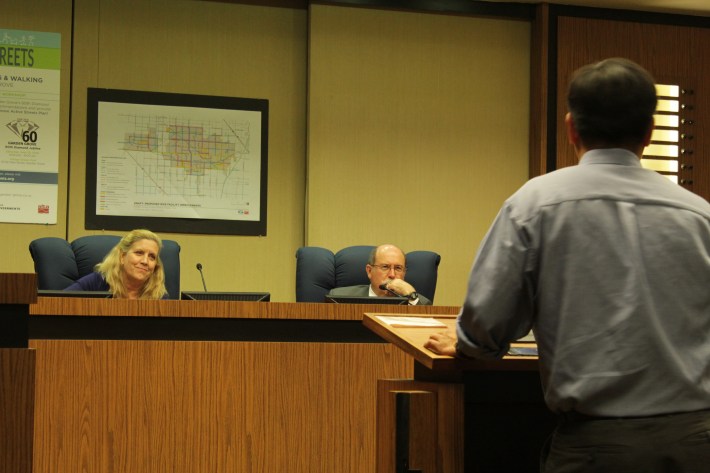
Mojgan Sami, lecturer of public health at the University of California Irvine and a Garden Grove resident, told city staff that the folks engaged with the ATLP want to see the Garden Grove's Active Streets Plan succeed, and that the group could be counted on if it needs support. "If you need advocacy, we're there for you," Sami said.
The public comments made by the two ATLP groups were a culmination of a month-long offering of workshops in which participants listened to and questioned active transportation experts and government representatives, and discussed with one another what a street could be.
California Walks, and especially its Southern California policy manager Caro Jauregui, facilitated the learning experience, organizing speakers, fielding questions from residents, and helping them prepare their public comments.
"This has all been learned because of Caro," said Benny Diaz, president of the Orange County League of United Latin American Citizens, a co-sponsor of the Garden Grove ATLP group.
Jauregui also coordinated walk audits with both city groups to help them refine their ability to recognize and identify issues on their streets.
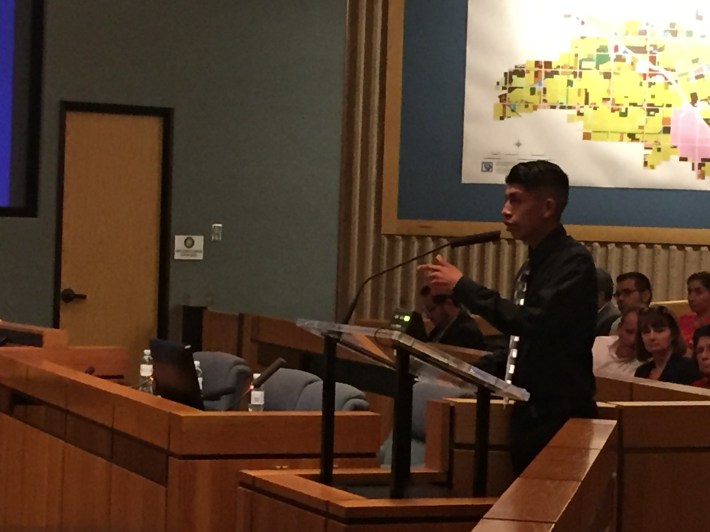
"One of the things I learned through the course of this program was that Anaheim is centered around drivers," said 16-year-old Sergio Nieto, a student at Anaheim High School who is taking part in the program. "Despite all these drivers, there still are a lot of people who do walk and who do bike wherever they go. I’m one of those people. I walk everyday wherever I go. My dad is always working so he is not usually there to provide transportation for me so I have to walk everywhere I go."
Most of the twelve Anaheim High students that attended the city council meeting dressed carefully, with the young men sporting groomed hair and collared shirts, some with ties, and the young women dressed in airy blouses. All the students are members of the student group Anaheim Bros., a student leadership group aimed at getting Chicano youth into universities.
Each one that went up to the podium offered an anecdote or a direct request:
- Daniel Hernandez talked about Anaheim Boulevard and Sycamore Street near Anaheim High School and Lowell Elementary. He described how they were unsafe for students that needed to cross, and said a crossing guard was needed.
- Bryan Mendoza described a close call he had with an automobile while he was walking with his brother after school. “This really shocked me, because I have a younger sister and when she attends Anaheim High School I don’t want her to be at risk of being hit."
Since the comments were given during the public comment period, the council wasn't allowed to debate the students' issues, said Anaheim mayor Tom Tait. But in response to the comments, Tait asked the city manager and public works department to look into the students' concerns, and directed the staff to include an agenda item at a future board meeting to address them.
“You guys brought a lot of great feedback that we would never get with all the information you gave. You live there. You walk there. . . . All very valuable," Tait said.
With the formal section of the Active Transportation Leadership Program coming to a close, the community groups are expected to continue collaborating with each other and with the first-year group from Santa Ana, said Rebecca Cousins, a policy analyst for Alliance for a Healthy Orange County, the program's lead. The three groups are expected to meet regularly and share ideas. They will also participate in creating parklets for the next Park(ing) Day on September 16.
Alexandra Retana, for her part, wants to continue to be involved with the issues she learned about through the ATLP. It's been a good start, she said, towards her interest in majoring in political science.
“The program helped me get more involved in the community; because political science isn't just about your wealth and what position you are in, but about the people around you,” Retana said.
